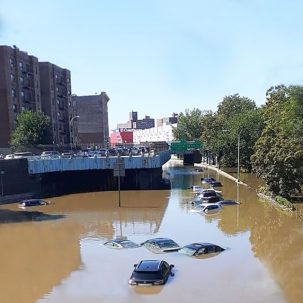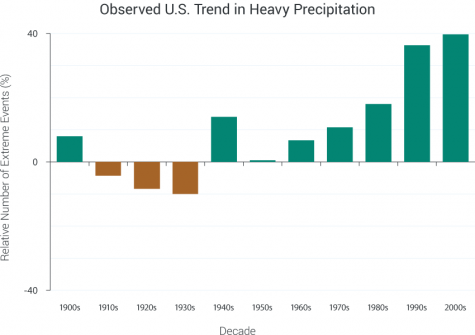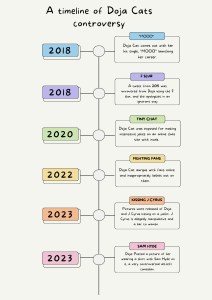Hurricane Ida: A Tropical Terror
September 23, 2021
Hurricane Ida took Louisiana by storm, striking as a category 4 hurricane and devastating everything in its path after forming in the Caribbean Sea on Aug. 28, 2021. It didn’t stop before making its way north, wreaking havoc on the east coast, brewing tornadoes in Pennsylvania and unimaginable flooding in New York.
The subways in NYC filled to the brim with dirty stormwater, posing immediate threats to anyone in transit. Adam Sobel, director of the Initiative on Extreme Weather and Climate at Columbia University, blames New York’s flooded subways on the political failures regarding funding and support of the Metropolitan Transit Authority (MTA).
“…one might have hoped, in an alternate reality—where, for example, the MTA weren’t chronically under-funded,” he says, “that we might have seen a bit more progress on keeping water out of the subways.”

Montgomery County, Pennsylvania experienced a similar type of devastation from the extreme weather. 7 deadly tornadoes ravaged through the county on Sept. 1, 2021, causing 3 casualties and destroying everything in its midst.
While hurricanes, tornadoes, droughts, floods, and heat waves are all inherent aspects of nature, the frequency and severity of them that we see today is not at all natural and has strong links to global warming.
As the atmosphere gets hotter, it can hold more moisture in the air leading to heavy rainfall and flooding, evaporates bodies of water at an accelerated rate causing droughts and fires, and defrosts glacial areas, leading to a rise in sea level and tropical storms (National Geographic).

Not only does this pose threats to the health of the environment and humans, but it also greatly affects the economy as well. According to the Center for Climate and Energy Solutions (C2ES), between Hurricane Harvey, Maria, and Irma in 2017, the devastating weather occurrences cost about $278.3 billion.
On top of that, 2020 was a record-breaking year for expensive disasters. Beating 2017’s record of 16 events, 2020 had 22 billion-dollar weather events, 20 of which being tropical storms and cyclones.
In order to avoid future economic and environmental implications, NRDC director Aliya Haq encourages every person to do their part to curb climate change.
“Change only happens when individuals take action,” she says. “There’s no other way, if it doesn’t start with people.”








